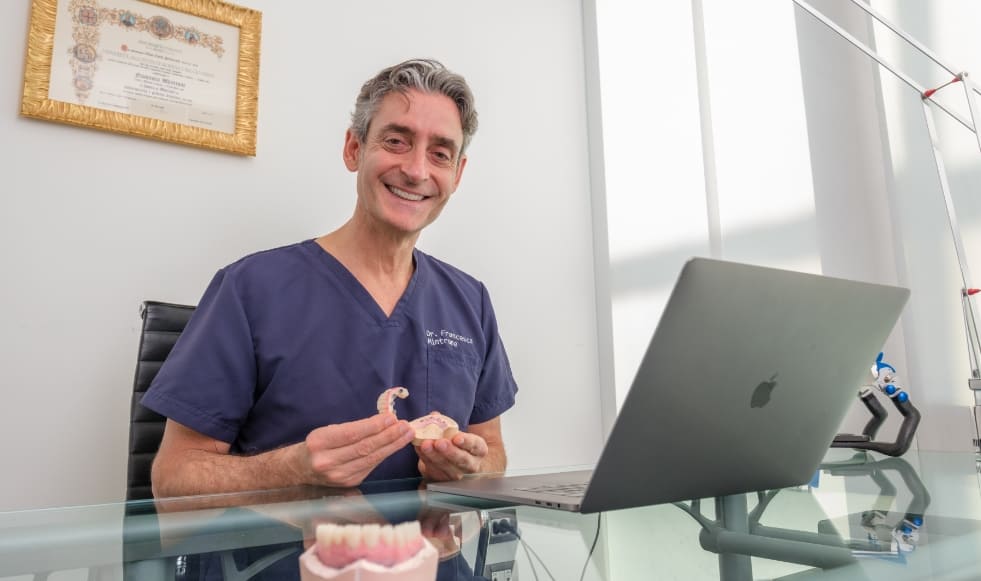Bone regeneration or GBR (Guided Bone Regeneration):
What is the purpose of bone regeneration?
Dental bone atrophy is a condition in which the volume of alveolar bone that supports the teeth narrows and reduces. It can be caused by various conditions, including:
- Tooth loss
- Periodontal disease or pyorrhea
- Trauma or infections
- Prolonged use of removable dentures.
To regenerate compromised bone tissue, several techniques are available, including bone regeneration, which aims to create a stable foundation for the subsequent placement of dental implants.
Bone regeneration, what is it in detail?
Bone regeneration or GBR is a surgical technique used to regenerate alveolar bone and can be of two main types:
- Autologous bone regeneration
- Heterologous bone regeneration
Autologous bone regeneration
In these situations, the bone material is harvested from the patients themselves, usually from the mandible.
Autologous bone is considered a highly effective bone grafting material, as it is biocompatible, does not cause allergic reactions or rejection, and has the ability to fully integrate with the surrounding bone tissue.
Heterologous bone regeneration
For this type of graft, biocompatible materials of animal or synthetic origin are used.
Heterologous bone undergoes a rigorous process of sterilization and preservation to ensure maximum safety and biocompatibility. This bone grafting technique can be a good treatment option for patients who do not prove to be suitable candidates for autologous bone or who require a larger amount of bone tissue.
How is the bone regeneration procedure performed?
During the procedure, the dentist will first create a small incision in the gum to access the underlying bone. Next, the soft tissue is gently moved to expose the area where the bone graft will be inserted.
The material will be placed in the desired area and the gum will then be sutured to promote healing.
Is bone regeneration procedure painful?
The entire procedure is performed under local anesthetic, ensuring that the patient does not experience any pain or discomfort. Following the procedure, some discomfort and swelling may occur. In such cases, it may be necessary to take analgesic medication to alleviate the pain.

What are post-surgery recommendations?
When does bone regeneration occur?
Dental bone regeneration can take approximately six months to complete. During this period, the inserted material will begin to integrate with the surrounding bone and form new bone tissue. After complete healing, the patient will benefit from a stronger and more stable alveolar bone, allowing for the placement of dental implants.
Would you like to schedule a visit or obtain more information about bone grafting? Please contact us, our team is at your disposal.
EXPLORE YOUR SMILE
Discover a new way of smiling and living your day, with confidence
